Fiddle leaf fig propagation is the easiest way to create more plants, leaving you with a larger plant budget for essential care and maintenance items like fertilizer and pots.
However, this process isn’t as straightforward as it seems – do it wrong, and you aren’t just left with a dead leaf, but an entire plant.
But, with my six easy steps for fiddle leaf fig propagation, you’ll be on your way to a house full of these stunning plants in no time.
When is the Right Time to Propagate a Fiddle Leaf Fig?
Fiddle leaf fig propagation is best during its active growing cycle between spring and summer. During this time, the plant will be more likely to root successfully and be less likely to suffer from the shock of being divided.
Essential Tools For Successful Fiddle Leaf Fig Propagation | How to Propagate a Fiddle Leaf Fig
Sharp Pruning Shears
A sharp, clean blade will make all the difference in your fiddle leaf fig ficus care and propagation. Sharp pruning shears or scissors ensure a clean cut that will help the plant to heal more quickly, reducing the chances of disease or rot.
While many different types of pruning shears are available, I recommend using heat-treated stainless steel blades with an ergonomic handle. These pruning shears work great in indoor or outdoor environments, provide precise cuts, are easy to clean, and won’t hurt your wrist from the repetitive motion of pruning.
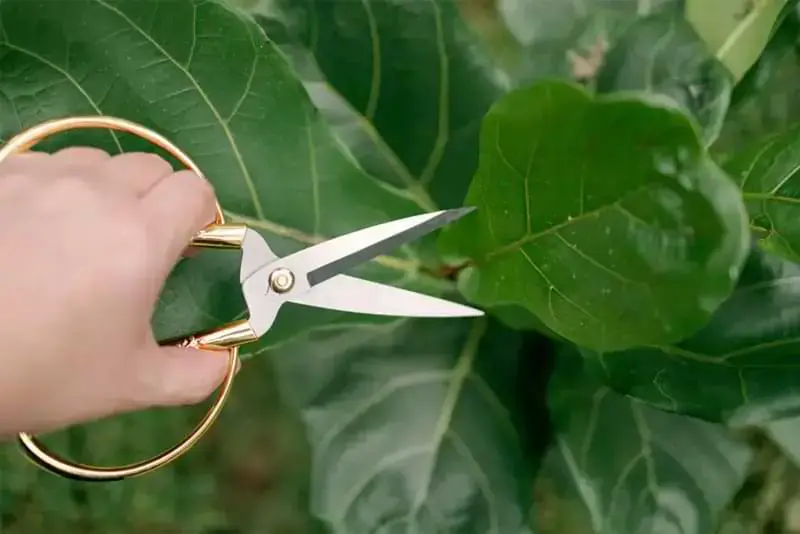
Propagation Promoter
You want every chance of success with fiddle leaf fig propagation, and using a propagation promoter can help give your plant the extra boost it needs. These easy-to-use formulas can be mixed directly into your water or applied to the cutting before planting.
My favorite propagation promoter contains natural ingredients specifically designed to stimulate root growth and prevent transplant shock. Furthermore, it is a versatile formula suitable for any houseplant and contains non-toxic ingredients for pets or kids who may come into contact with the propagated cuttings.
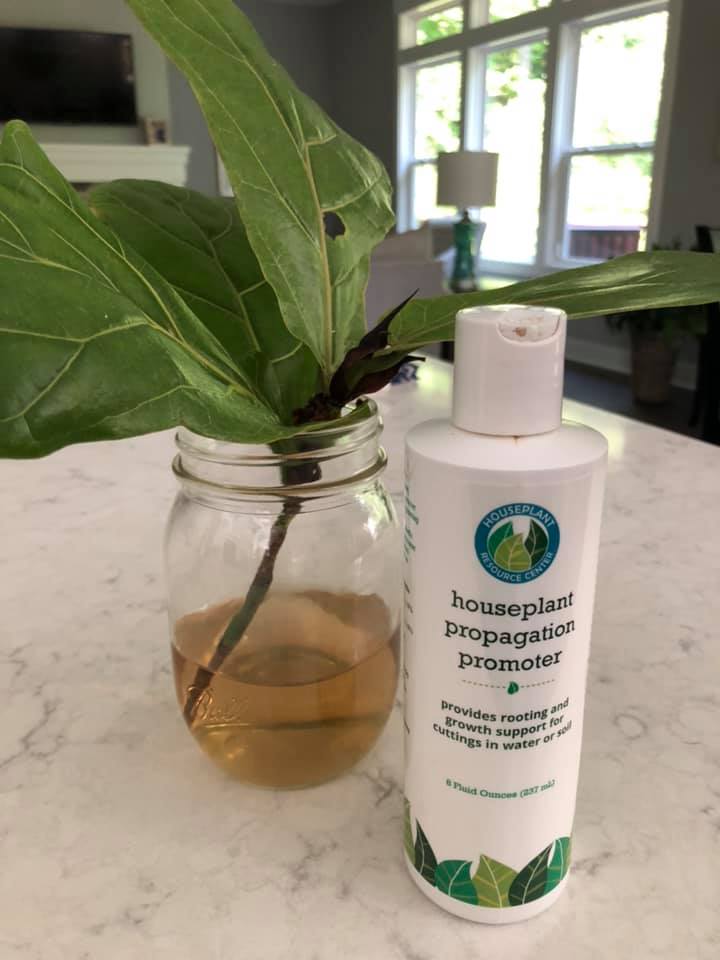
Fiddle Leaf Fig Ficus Potting Soil
The native growing environments of your fiddle leaf fig propagation mean you need more than a basic indoor houseplant soil to ensure robust, vibrant growth into a fully matured plant. In truth, you’ll want a specialty Fiddle Leaf Fig plant soil that is well-draining and offers adequate nutrients to keep your plant growing and thriving. This is key for your fiddle leaf fig ficus care.
My preferred fiddle leaf fig plant soil contains a healthy mix of bark, coco coir, and perlite, which is perfect for root development and offers excellent drainage. I also like to include a bit of smart gravel at the bottom of the pot to help with drainage, which is especially ideal if you live in humid environments that keep the soil too wet.
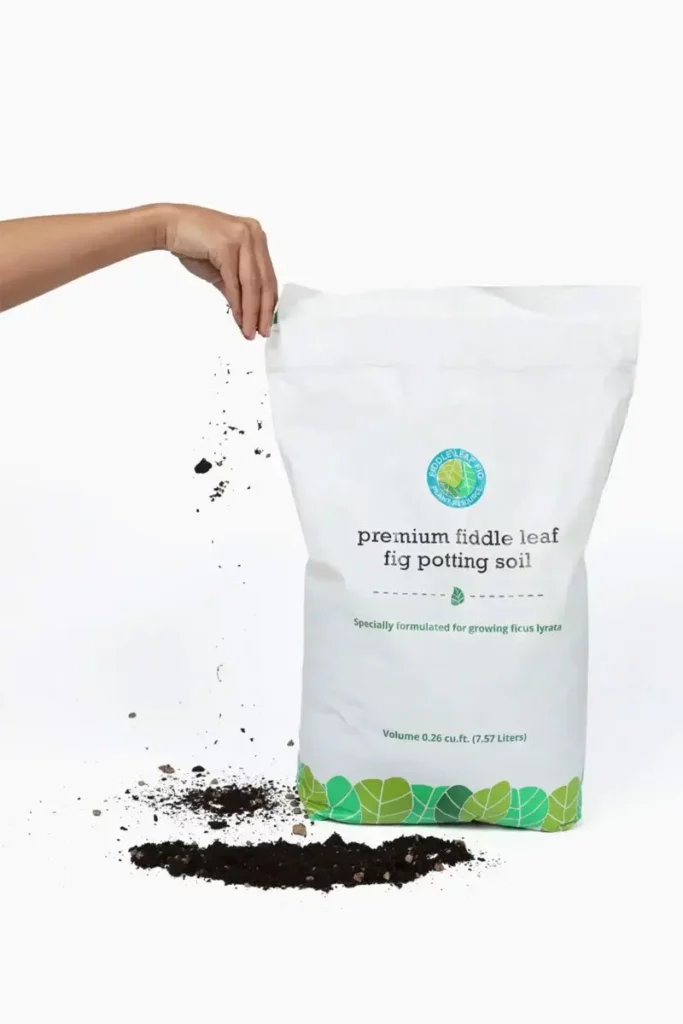
Rooting Supplement
A fiddle leaf fig plant root supplement is a vital part of post-cutting and potting fiddle leaf fig care. These liquid formulas help your plant grow a strong, robust root system for optimal growth. As a bonus, it can also help parent plants heal from the shock of dividing.
My go-to houseplant root supplement contains natural ingredients and humic acids, which stimulate root growth while offering critical nutrients for overall plant health. This supplement is easy to use, works fast, and is suitable for direct or water-based application.
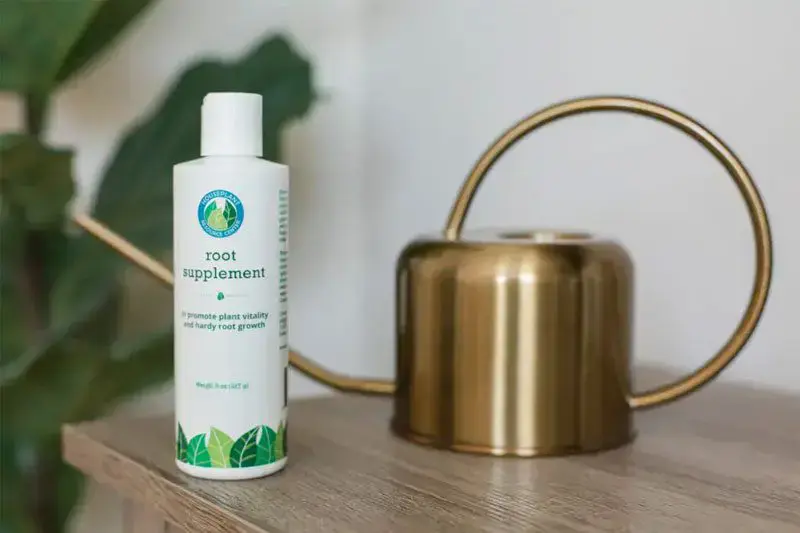
How to Propagate a Fiddle Leaf Fig Plant in Six Easy Steps
Step 1: Prepare Your Fiddle Leaf Fig Propagation Container
When you consider how to propagate a fiddle leaf fig ficus there are two methods to consider. To propagate a fiddle leaf fig plant: soil or water. Both have unique advantages and disadvantages, but in both cases, you’ll want to ensure your container is prepared in advance to avoid any unnecessary delays or plant shock.
If you are propagating in soil, make sure the pot is clean and filled with the appropriate soil mix mentioned above. If you are propagating in water, use a clear container to monitor root growth easily.
No matter the fiddle leaf fig propagation process, containers should be at least 2 inches and no more than 6 inches deep. These sizes ensure the cutting has adequate growing space, enough room for the potting medium, and ample air circulation.
Step 2: Take a Healthy Fiddle Leaf Fig Cutting
Taking a healthy leaf cutting for successful fiddle leaf fig propagation starts with understanding the anatomy and health of the plant.
The most important thing to remember when cutting is to choose a healthy leaf with at least two nodes, which are the points on the stem where leaves grow. The more nodes your cutting has, the better its chances of rooting and developing into a thriving plant.
Once you’ve identified a healthy leaf, use sharp, clean pruning shears to make a clean cut just below the bottom node on the stem. This will ensure your cutting has enough nutrients to grow roots and develop into a new plant.
There is a debate about whether a straight or 45-degree angle cut is best for propagation. The truth is that both can work, but the 45-degree angle cut increases surface area, enhancing successful rooting and nutrient uptake to cuttings.
After you’ve taken your cutting, you’ll want to remove the bottom leaves to prevent any rotting or disease and leave only the top two or three leaves.
Step 3: Treat With Rooting Hormone and Propagation Promoter
After taking your cutting, swab the cut end with rooting hormone to help encourage rapid healing and ensure that the plant stays in excellent condition to facilitate more cuttings in the future.
The cutting should be dipped in a propagation promoter before being transferred to its soil or water propagation container. This helps stimulate root growth and provides essential nutrients to the cutting while developing its root system.
Step 4: Plant Your Cutting For Fiddle Leaf Fig Propagation
If you use the soil method, you’ll want to make a small hole in the soil with your finger or a pencil and gently place the cutting into it, ensuring that at least one node is underneath the soil. Press lightly on the soil around the stem to secure it in place.
If you use the water method, you’ll want to fill your clear container with room temperature water and submerge the cutting, ensuring that at least one node is under the water. Place your container in a well-lit area, but avoid direct sunlight as it can heat the water and damage the roots.
Step 5: Monitor and Provide Care
Care practices for a newly propagated fiddle leaf fig plant are similar to that of an adult plant. If you are using the soil method of propagation, keep the soil moist but not soggy and treat exposed plant parts with a leaf armor to ensure no bacterial or fungal infections occur.
Those using the water propagation method should change the water whenever it becomes cloudy and watch for algae growth, which can affect the cutting’s development. Change the water and gently wipe down the container with a clean cloth if you see any.
You’ll start to see new root growth in about two to four weeks, and once your cutting has developed a healthy root system, you can transplant it into a larger pot with fresh soil.
Step 6: Plant Your Rooted Fiddle Leaf Fig Cutting
After about a month, or when roots are about 3 inches long, your cutting is ready for a permanent home in a new pot. Gently remove it from its propagation container, taking extra care not to damage the new roots.
Planting is simple; transfer the cutting to a new pot with fresh soil and continue to provide it with proper care. After planting, continue to use a Fiddle Leaf Fig Plant Food and root supplement to help keep your plant healthy and thriving.
Everything You Need To Know About Fiddle Leaf Fig Propagation
Fiddle Leaf Fig Care Tips
Whether new or established, a fiddle leaf fig tree require proper care to thrive and grow. Check out my top 10 tips on how to keep your fiddle leaf fig tree green and gorgeous:
Fill Your Home With Gorgeous Fiddle Leaf Fig Trees
Fiddle Leaf Fig propagation is the key to filling your home with gorgeous fiddle leaf fig trees. By taking healthy cuttings and using proper care practices, you can easily turn one plant into many and create a beautiful indoor jungle.
Want more advice on cultivating and caring for your fiddle leaf fig tree? Subscribe to our newsletter and enroll in the free Fiddle Leaf Fig Care Course. Both provide valuable tips, tricks, and resources to help you become an expert grower in no time. Happy growing!

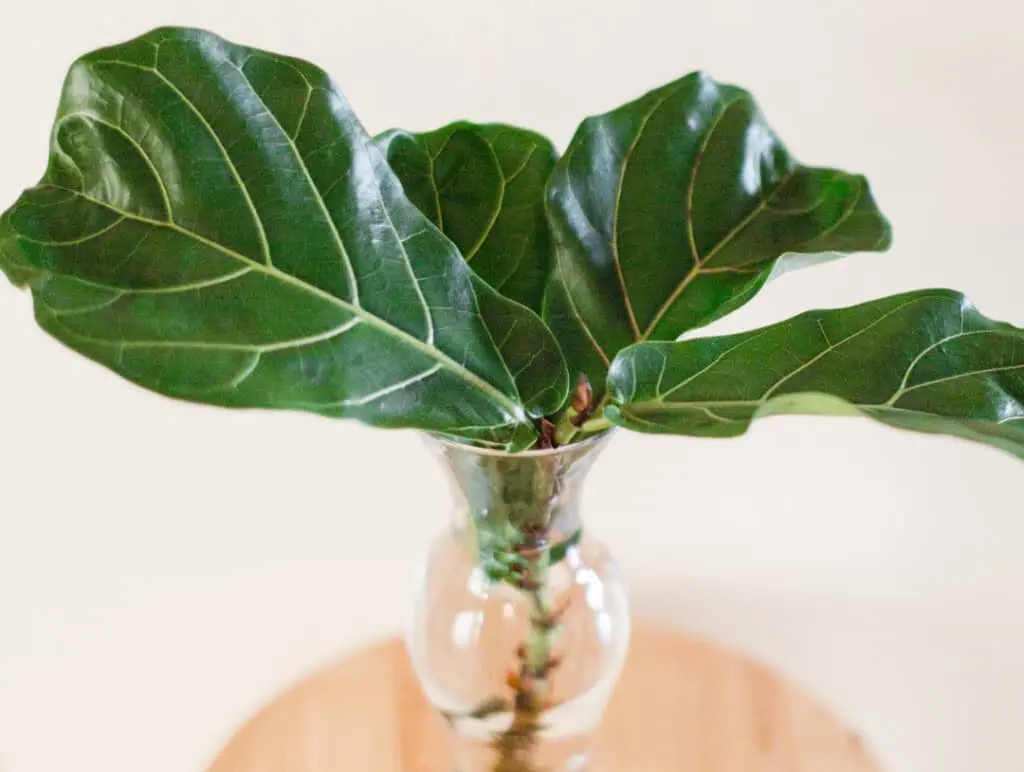
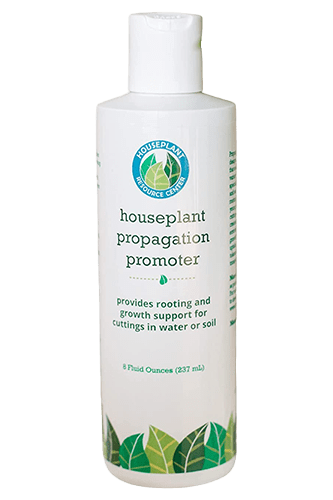
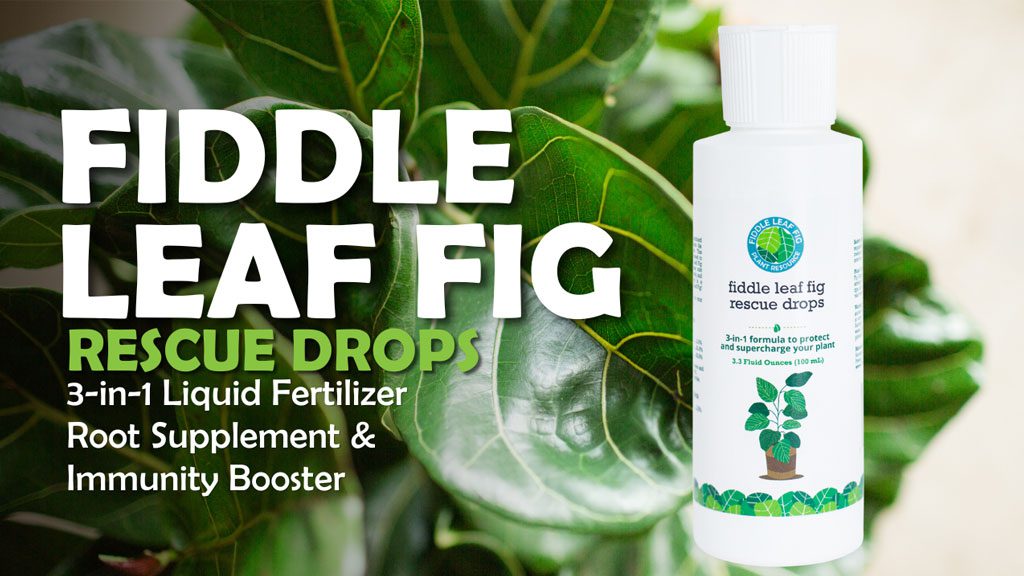

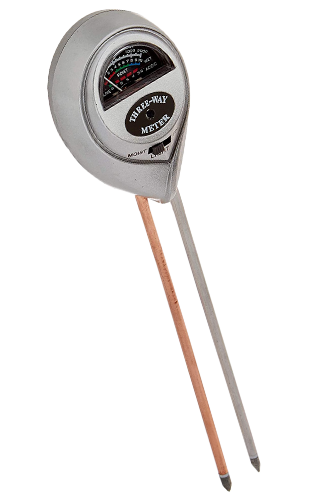



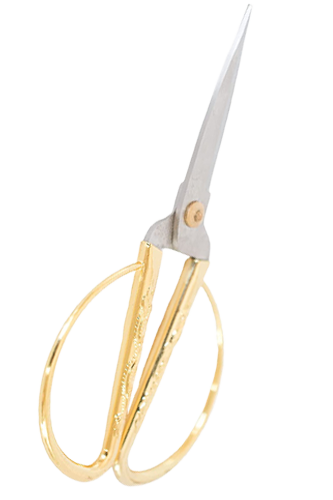




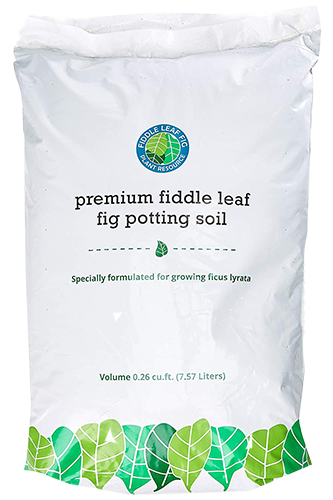

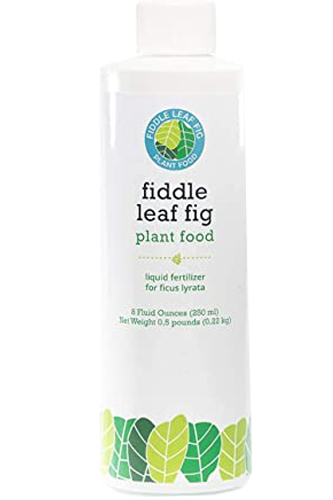

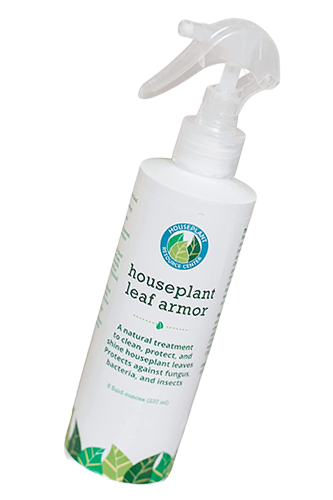
Can I propagate from a cutting in the Winter? I live in Australia so our winter’s are quite mild.
You can! While the best time is in the Spring, if you give your cuttings plenty of light they may be able to propagate in the winter. Please let me know how it turns out!
Hi Claire, Always glad to meet another fiddle leaf fig lover. Your picture under step five is from my blog Jewels at Home, and I would appreciate proper credit.
Thank you, Julie
Thanks so much Julie, I’ve added the credit!
Hi. I’m a new fiddle leaf plant lover and I’ve had this plant for 6 months now. Doing great until 2 days ago when I noted a whitish /grayish progressive discoloration on the leaf. Can you help identify what it is and what should be done to treat it? Many thanks
Thanks for sharing – it sounds like you could have a powdery mildew. Could you send photos to claire@indigomarketingagency.com? If this is the case, you would want to treat with a normal indoor plant fungicide and it will clear up quickly. Claire
Hi, I have a cutting in water for 2 months and so far no roots. What did I do wrong.